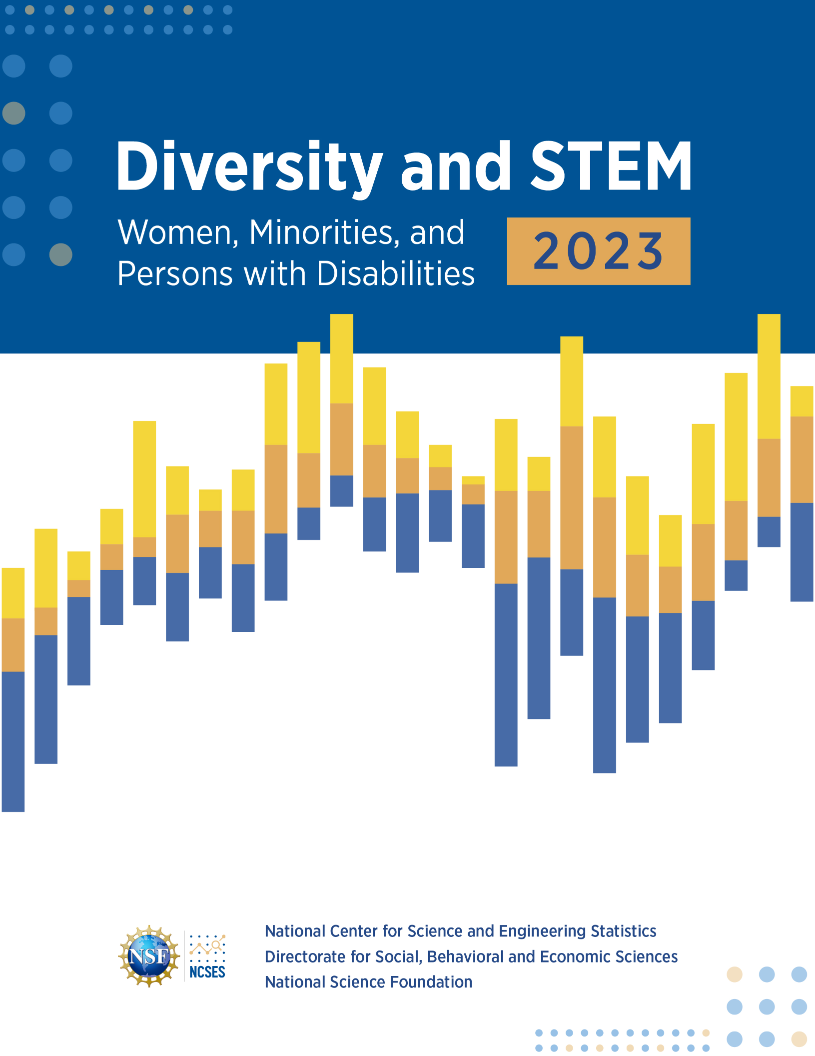
Archived Story: This article is part of our newsletter archives. It has
been preserved for reference, but the information may no longer be current.
The National Center for Science and Engineering Statistics (NCSES), part of the National Science Foundation, recently released Diversity and STEM: Women, Minorities, and Persons with Disabilities 2023, the federal government's latest and most complete analysis of diversity trends in STEM employment and education.
Among the report's findings:
- Women earned half of science and engineering bachelor's degrees (50%) and associates degrees (49%). Women represented about one-third of the STEM workforce (35%), and their wages were consistently lower than men's.
- Women, as well as Hispanic and Black students, continued to pursue advanced degrees in science and engineering fields in increasing numbers during the COVID-19 pandemic.
- Collectively, Hispanic, Black, American Indian, and Alaska Native people made up 31% of the U.S. population, but 24% of the STEM workforce in 2021. They were more likely to work in STEM occupations that require technical skills or certification than in those that require a bachelor's degree or higher education.
- Hispanic, Black, American Indian, and Alaska Native STEM workers have lower median earnings than white or Asian STEM workers.
- Hispanic students have made significant advances in earning associate's degrees in science and engineering fields. The total number of those degrees awarded to Hispanic students tripled between 2011 and 2020, bringing their share of associate's degrees awarded in science and engineering fields to 32%. Nearly two-thirds (63%) of Hispanics in STEM are in jobs that do not require a four-year degree, making up nearly one-fourth of those workers (24%).
- Unemployment rates in 2021 for STEM workers who were Black (6.6%) and Hispanic (5.7%) were higher than for white (2.9%) and Asian (2.3%) workers.
- Bachelor's degrees in science and engineering fields earned by American Indian and Alaska Native students declined between 2011 and 2020, both in number and as a proportion of all degrees awarded.
- Among workers with at least one disability, 21% worked in STEM occupations in 2021, and 3% of the STEM workforce were people with disabilities.
- Among science and engineering doctorate recipients in 2021, 11% reported having at least one disability.
For more information click here.